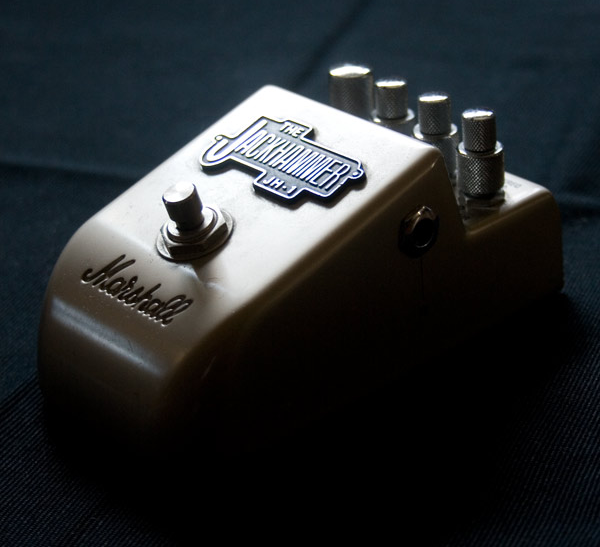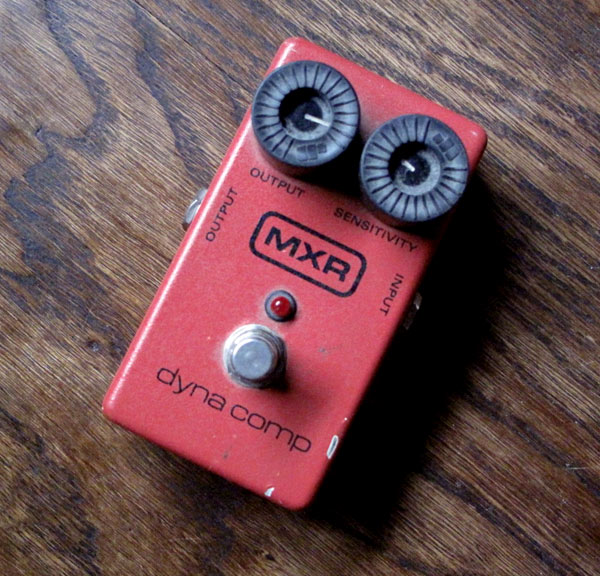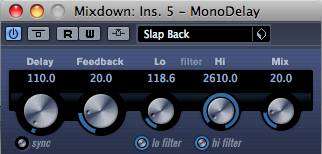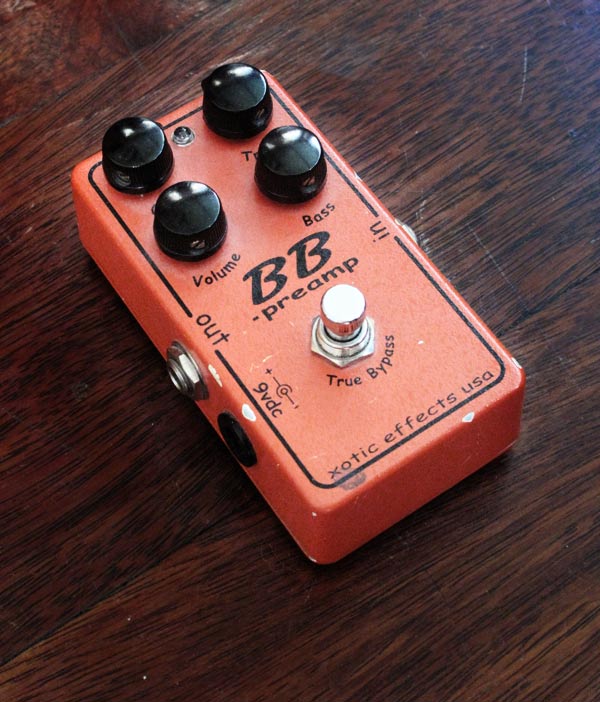Getting a Marshall type of distortion out of a pedal is a very common desire on the quest for the ultimate tone. Not everybody can afford to lug around a big Marshall stack or you might simply want to have several tonal options within the same rig. Another common complaint about modern Marshall amps is the relatively bland clean tone (although I have recently tried a Vintage Modern model and was quite impressed!). So using one amp such as a Fender or Vox for your clean tone and a Marshall pedal for your overdriven tone can be highly desirable.

There are several Marshall eras: the 60s (think early Clapton or Hendrix), the 70s/80s (from AC/DC to Van Halen), the late 80s/90s (higher gain) and the late 90s/naughties with the very successful JCM 2000 range (think modern Jeff Beck)… And the very recent JVM range has apparently gained the favour of Joe Satriani… What has changed through the ages is not so much the basic character of the tone but rather the amount of available gain and various amplifier features (more channels, more eq options, fx loops, etc.). After 5 decades, Marshall still represents THE British rock tone.
There are plenty of pedals on the market aimed at emulating the Marshall tone of any era, including a lot of boutique options. Funnily enough, Marshall pedals are rarely taken as examples of “Marshall in a box tone” which I think is quite unfair. They have to be the most underrated pedals on the market. I have presented the discontinued Shredmaster in a previous post and will now present its replacement in the Marshall line: the Jackhammer.
The Jackhammer is part of a trio of overdrive and distortion pedals, alongside the Blues Breaker 2 and the Guv’nor 2. It is the highest gain of the three but is also capable of lower gain tones as you will notice in the demo videos.
I think that for the price, the Jackhammer is loaded with features: 2 modes (overdrive and distortion), gain, volume and a sophisticated EQ section with Bass, Treble as well as a mid-range section tweakable with a contour knob and a frequency knob. The Overdrive mode is reminiscent of a quite high gain Marshall amp, think JCM 800/900. The distortion mode aims at creating more modern and gainier tones, kind of a JCM 2000 simulation. The Distortion mode is dark and bassy and also quite noisy which explains why it is getting some bad reviews. Nevertheless, I think it is possible to get some interesting tones out of it. The Overdrive mode really shines and can turn my little Fender amp into a credible Marshall amp. I like the fact that it is silent enough compared to the distortion mode. The amount of gain is not super huge compared to some recent ultra high gain pedals (the Jackhammer was designed in the late 90s) but with high output Humbuckers, you can get some metal out of it! With my Gibson SG, which does not have hight output humbuckers, I can already get some fat sustain out of the Jackhammer.
Now this all sounds wonderful but know that one major hassle with the Jackhammer is the Midrange EQ section. It has 2 knobs, one marked contour and one marked freq and it is not exactly intuitive to understand what they do. The Marshall documentation states that these two knobs allow to scoop the mids and choose the frequency to scoop. Getting the settings right is very important as the Jackhammer can sound from wonderful to just ugly just by turning these two knobs a little. You do have to experiment quite a bit as it totally depends on your amp. The EQ section also features a Bass and a Treble knob which are fortunately intuitive and efficient. The Jackhammer can produce plenty of bass so you might want to turn the bass to 9 o’clock for a start. Compared to the now discontinued Shredmaster, the Jackhammer provides more gain and is not as dark which is in my opinion an advantage should you use it with an already dark amp.
Jackhammer tone with Humbuckers
Anyway, enough of my yacking, here is how it sounds with a Gibson SG and some fat humbuckers. I show both modes here, Overdrive and Distortion:
The Jackhammer settings for this video were: Volume at 10 o’clock, Bass at 9 o’clock, Treble at 9 o’clock for the overdrive mode or 12 o’clock for the Distortion mode, Contour at minimum, Freq at 12 o’clock, various gain settings (see video).
Jackhammer Tone with single-coil pickups
With a Stratocaster equipped with relatively low output noiseless Kinman pickups, the Overdrive mode gets bluesier and not as precise as it is with humbuckers. That said, it is reminiscent of Hendrix and I find this rather cool (note that the midrange EQ settings are different from the previous video!):
The Jackhammer settings for this video were: Volume at 10 o’clock, Bass at 9 o’clock, Treble at 10 o’clock, Overdrive Mode , Contour at 12 o’clock, Freq at max, various gain settings (see video).
Shredmaster vs Jackhammer
And now for something different, here is a quick comparison of the Shredmaster and the Jackhammer (Overdrive mode) with the gain on full on both pedals:
Marshall Jackhammer Settings: Bass at 9 o’clock, Treble at 10 o’clock, Contour at noon, Freq on Max, Volume at 10 o’clock, Gain on Full.Marshall Shredmaster settings: Gain on Full, Bass 12 at 12 o’clock, Contour at 8 o’clock, Treble at 10 o’clock and Volume at 2 o’clock
How the videos were recorded
The amp used was a 1974 Fender Champ with Volume around 3, Bass at 10 and Treble at 2.5. It was miked by a RODE NT4 and recorded with a BOSS Micro-BR. A hint of reverb and compression were added in Cubase 5 later on. The pedal settings and guitar used are indicated under each video.




